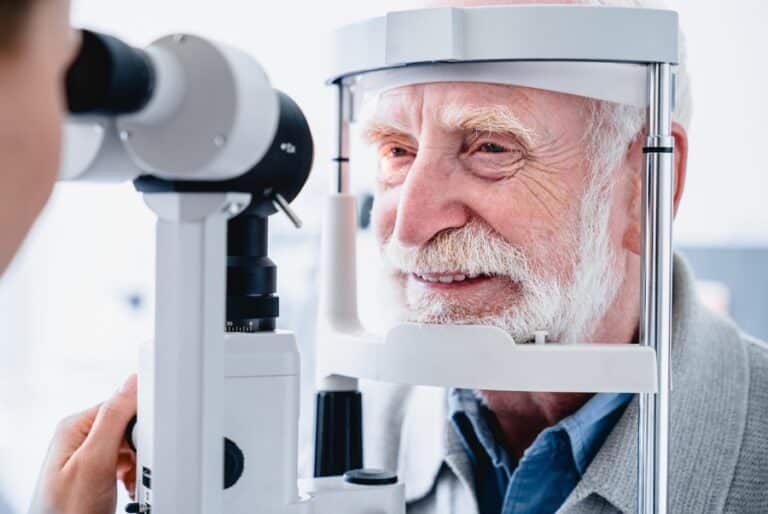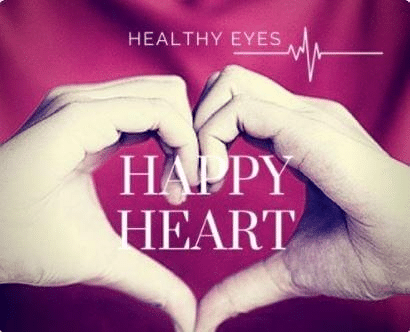Eye & Heart Health
What does heart health and eyes have in common? A lot! Did you know that an eye exam can be an effective tool in determining your overall health? Yes, our doctors will perform different tests during your eye examination to rule out eye disorders such as cataracts, glaucoma, macular degeneration, and retinal problems; however they can also identify other potential health concerns, like hypertension and high cholesterol..
February is National Heart Health Month, and our team wants to raise awareness around both heart and eye health.
Hypertension
In heart patients, hypertension is one area optometrist and ophthalmologists keep a close watch on. Some of the smallest blood vessels are in the back of the eye, the retina, where an image focuses. Systemic disease, such as hypertension, affects the smallest blood vessels of the body first. As a result, it is often optometrists and ophthalmologists that first diagnose hypertension and diabetes. If hypertension is not properly treated, it can cause serious damage to the blood vessels in the retina, the area at the back of the eye where images focus. This eye disease is known as hypertensive retinopathy. Narrowing of blood vessels, spots on the retina known as cotton wool spots and exudates, swelling of the macula (the central area of the retina) and optic nerve, and bleeding in the back of the eye are signs doctors look for in diagnosing hypertension. The affects of hypertension in the back of the eye can lead to vision loss, if not properly treated.
Request a Consultation
We’d love to help you get all the information you need in order to make the best choice for your eyes. Request a consultation today! Our staff is available and happy to answer your every question.
High Cholesterol
High cholesterol can affect the eyes and vision, and the affect can be anything from benign and cosmetic to devastating, irreversible blindness.
One ocular sign of high cholesterol is a bluish ring that forms near the outside of the cornea, the otherwise clear, front part of the eye. These rings, called “arcus senilis,” appear most commonly with age as more cholesterol gets deposited into the cornea. Arcus senillis is benign and does not interfere with vision, however it may signal high cholesterol; if you or a family member shows this sign, it would be wise to get a lipid panel test from your physician. Another sign are small, soft, yellowish elevations of skin above the eyes and near the nose, called xanthelasma. These are also benign though they can (but not always) indicate high cholesterol.
Yet another sign of high cholesterol and carotid artery disease can show up as a yellow Hollenhorst plaque visible within one of the blood vessels in the retina. It can appear as a highly-reflective, yellow emboli typically seen at a bifurcation of a retinal arteriole. These can be asymptomatic for the patient but can alert the optometrist/ophthalmologist treating the patient to seek a cardiologist.
During National Heart Health remember, yes, we are looking out for your eye health, but your heart health is also high on our team’s list.
Take the Next Step
You’ll benefit not only from the latest technologies available but also from our compassionate, personal approach. You’re more than a patient at Vold Vision in Bentonville and Fayetteville. We strive to make you as comfortable as possible while evaluating the optimal treatment plan just for you. We invite Fayetteville, Rogers, Bentonville, and Springdale residents to contact us today for a consultation at (479) 442-8653.







